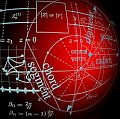Profitability Index Calculator
Instructions: Use this step-by-step Profitability Index Calculator to compute the profitability index (\(PI\)) of a stream of cash flows by indicating the yearly cash flows (\(F_t\)), starting at year \(t = 0\), and the discount rate (\(r\)) (Type in the cash flows for each year from \(t=0\) to \(t = n\). The first cash flow must be negative. Type '0' if there is no cash flow for a year):
Profitability Index Calculator
More about the this PI calculator so you can better understand how to use this solver
The profitability index of a stream of cash flows \(F_t\) depends on the discount interest rate \(r\), and the cash flows themselves. It is computed as the present value (\(PV\)) after the initial investment \(I\).
How do you calculate the profitability index (PI)?
First, we let:
\[ PV = \displaystyle \sum_{i=1}^n \frac{F_i}{(1+i)^i} \]be the present value (\(PV\)) after the initial investment. The profitability index is therefore:
\[ PI = \frac{PV}{I}\]Other ways to evaluate a project include using instead a NPV calculator or also a IRR calculator . Those two metrics are the most common ones used to evaluate and make the decision of whether or not a project should be undertaken.

Example of the calculation of the profitability index
Question: Assume that you act as the manager company, and you are asked to evaluate a project. This project requires a payment of $10,000 to get started. Then, it is expected that the project will bring a revenue of $3,000 at the end of the first year, and then another $4,000 at the end of the following 3 years. Suppose that the discount rate is 4.5%, compute the profitability index of the project.
Solution:
This is the information we have been provided with:
• The cash flows provided are: -10000, 3000, 4000, 4000, 4000 and the discount rate is \(r = 0.045\).
Therefore, the initial investment is \(I = 10000\), and the present value (PV) of cash flows after the initial investment associated to these cash flows are computed using the following formula
\[ PV = \displaystyle \sum_{i=1}^n {\frac{F_i}{(1+i)^i}} \]The following table shows the cash flows and discounted cash flows:
| Period | Cash Flows | Discounted Cash Flows |
| 1 | 3000 | \(\displaystyle \frac{ 3000}{ (1+0.045)^{ 1}} = \text{\textdollar}2870.81\) |
| 2 | 4000 | \(\displaystyle \frac{ 4000}{ (1+0.045)^{ 2}} = \text{\textdollar}3662.92\) |
| 3 | 4000 | \(\displaystyle \frac{ 4000}{ (1+0.045)^{ 3}} = \text{\textdollar}3505.19\) |
| 4 | 4000 | \(\displaystyle \frac{ 4000}{ (1+0.045)^{ 4}} = \text{\textdollar}3354.25\) |
| \(Sum = 13393.16\) |
Based on the cash flows provided the PV is computed as follows:
\[ \begin{array}{ccl} PV & = & \displaystyle \frac{ 3000}{ (1+0.045)^{ 1}}+\frac{ 4000}{ (1+0.045)^{ 2}}+\frac{ 4000}{ (1+0.045)^{ 3}} +\frac{ 4000}{ (1+0.045)^{ 4}} \\\\ \\\\ & = & \text{\textdollar}2870.81+\text{\textdollar}3662.92+\text{\textdollar}3505.19+\text{\textdollar}3354.25 \\\\ \\\\ & = & \text{\textdollar}13393.16 \end{array} \]Therefore, the profitability index is (\(PI\)) computed as.
\[ \begin{array}{ccl} PI & = & \displaystyle \frac{PV}{I} \\\\ \\\\ & = &\displaystyle \frac{13393.17}{10000} \\\\ \\\\ & = & 1.3393 \end{array} \]Therefore, the profitability indexe associated to the provided cash flows and the discount rate of \(r = 0.045\) is \( PI =1.3393\).




